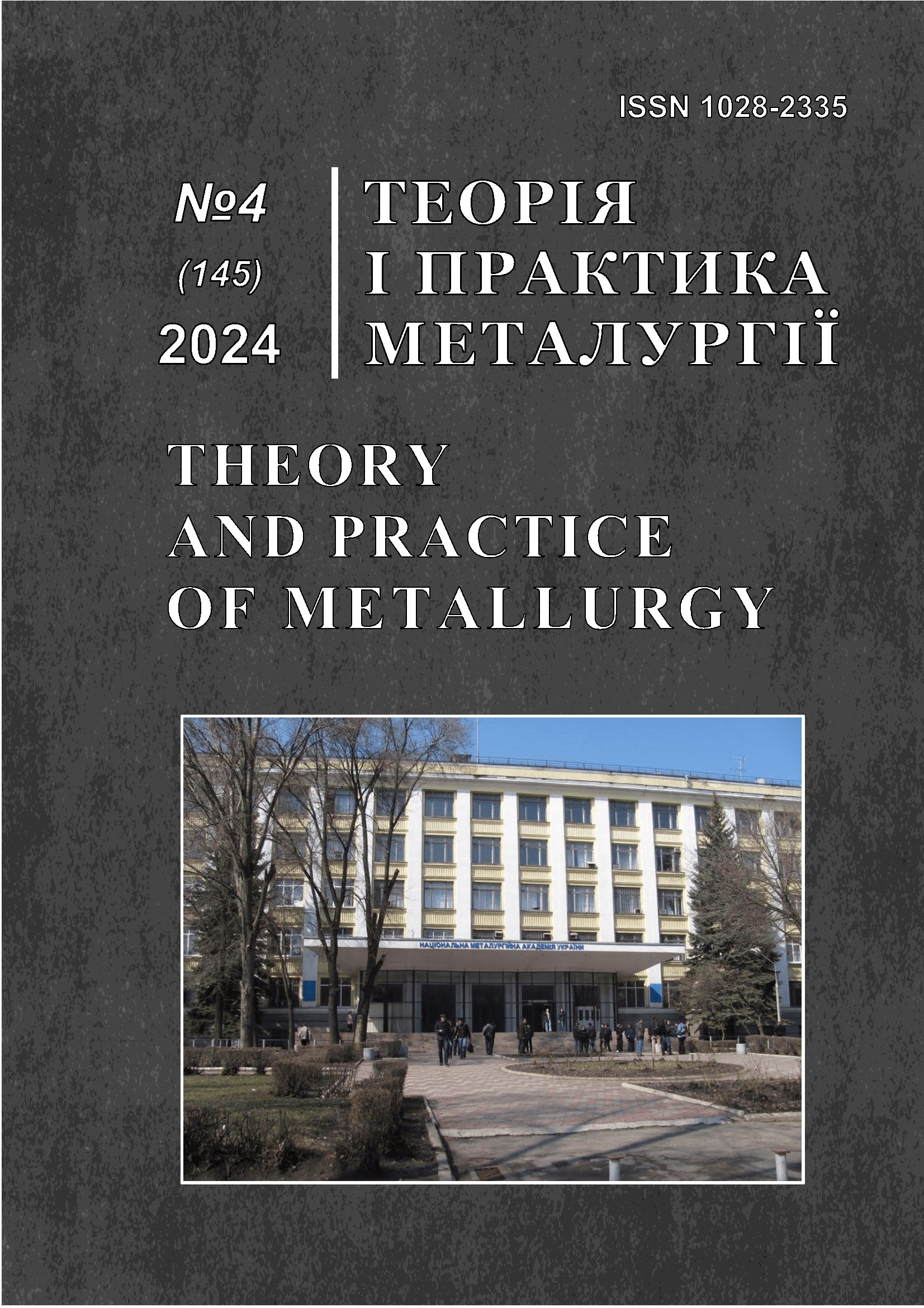Research on particle jamming in the openings of a freely laid sieving surface of a vibrating screen
DOI:
https://doi.org/10.15802/tpm.4.2024.03Keywords:
stabilization, granulometric composition, agglomerate, vibrating screen, dynamic loadsAbstract
The purpose of the study was to determine the conditions for stabilizing the granulometric composition of agglomerate fractions of 5…40 mm through vibratory impact processing on a freely laid sieving surface of a vibrating screen. The research employed an analytical approach and numerical modeling, considering the kinematics of particle movement on the sieving surface. The process was divided into two stages: joint movement with the sieving surface and free motion under gravity. Mathematical models were used to analyze the motion characteristics of particles, including speed, lift height, and duration of free movement. The study results demonstrated that stabilizing the granulometric composition of the agglomerate is achieved by breaking particles along stress concentrators formed in weak zones, such as slag bonds or vitrification areas. For effective stabilization, it is necessary to ensure the dynamic parameters of the vibrating screen, specifically vibration accelerations in the range of 32.9…47.3 m/s² at a constant amplitude of 0.003 m. For the first time, the kinematics of agglomerate particle motion on a freely laid sieving surface under dynamic loads were described in detail, and critical parameters necessary for granulometric composition stabilization were established. The study's findings are practically significant as they improve the mechanical processing technologies of agglomerates, specifically by reducing energy consumption in preparing burden materials for blast furnaces and enhancing the efficiency of metallurgical production. The use of the results allows optimization of sintering plant operations, ensuring high-quality preparation of burden materials.
References
Russkykh, V. P., Tarasov, V. P., & Kryenko, O. V. (2000). Yssledovanye y sovershen-stvovanye tekhnolohyy proyzvodstva ahlomerata. Visnyk Pryazovskoho derzhavnoho tekhnichnoho universytetu, (10), 21–25
Bochka, V. V., Sova, A. V., & Dvoeglazova, A. V. (2018). Issledovanie osobennostey protsessa razrusheniya aglomerata v ustroystve barabannogo tipa. Metall i lite Ukrainy, (11-12), 3–9
Bochka, V. V. et al. (2017). Osobennosti formirovaniya napryazhennogo sostoyaniya i razrusheniya aglomerata. Metall i lite Ukrainy, (6-7), 3–6
Bochka, V. V. et al. (2017). Povedinka ahlomeratu pry mekhanichnykh navantazhenniakh. In Aktualni problemy rozvytku metalurhiinoi osvity i nauky. Materialy Vseukr. naukovo-tekhnich. konf., Dnipro, 4.04.2017, 233–237
Bochka, V. V. et al. (2014). Ratsionalnaia skhema podgotovki aglomerata k domennoi plavke. Visnyk Kryvorizkoho natsionalnoho universytetu, (36), 234–237
Sova, A. V. (2020). Udoskonalennia tekhnolohii vyrobnytstva ahlomeratu shliakhom formuvannia ratsionalnoi blokovoi struktury na osnovi rozdilnoi pidhotovky shykhty ta mekhanichnoi obrobky spechentsia.[Dissertation for the degree of Candidate of Technical Sciences in the specialty 05.16.02, Dnipro]
Khopunov, E. A. (2013). Selektivnoe razrushenie mineralnogo i tekhnogennogo syria (v obogashchenii i metallur-gii). OOO “UIPTS”
Uchitel, A. D., Zaselskiy, V. Y., & Popolov, D. V. (2017). Analiz formirovaniia granulometricheskogo sostava shikhtovogo materiala na trakte ego podachi v domennuiu pech. In XIII Mezhdunarodnaya konferentsiya "Strategiya kachestva v promyshlennosti i obrazovanii", Varna. Volume 2, 173-176
Bondarenko, A. A., Dubinin, O. O., & Pereiaslavvtsev, O. M. (2004). Teoretychna mekhanika. (Volum 2. Dynamika). Znannia
Uchitel, A. D. (1992). Sozdanie vysokoeffektivnykh vibratsionnykh mashin dlya podgotovki metallurgicheskikh shikht. [Dissertation for the degree of Doctor of Technical Sciences, Dnipropetrovsk]
Downloads
Published
How to Cite
Issue
Section
License
Copyright (c) 2024 Zaselskyi V.Y., Popolov D.V.

This work is licensed under a Creative Commons Attribution 4.0 International License.
Authors retain copyright of the published papers and grant to the publisher the non-exclusive right to publish the article, to be cited as its original publisher in case of reuse, and to distribute it in all forms and media. Articles will be distributed under the Creative Commons Attribution 4.0 International (CC BY 4.0) licence.
Authors can enter the separate, additional contractual arrangements for non-exclusive distribution of the published paper (e.g., post it to an institutional repository or publish it in a book), with an acknowledgement of its initial publication in this journal.




